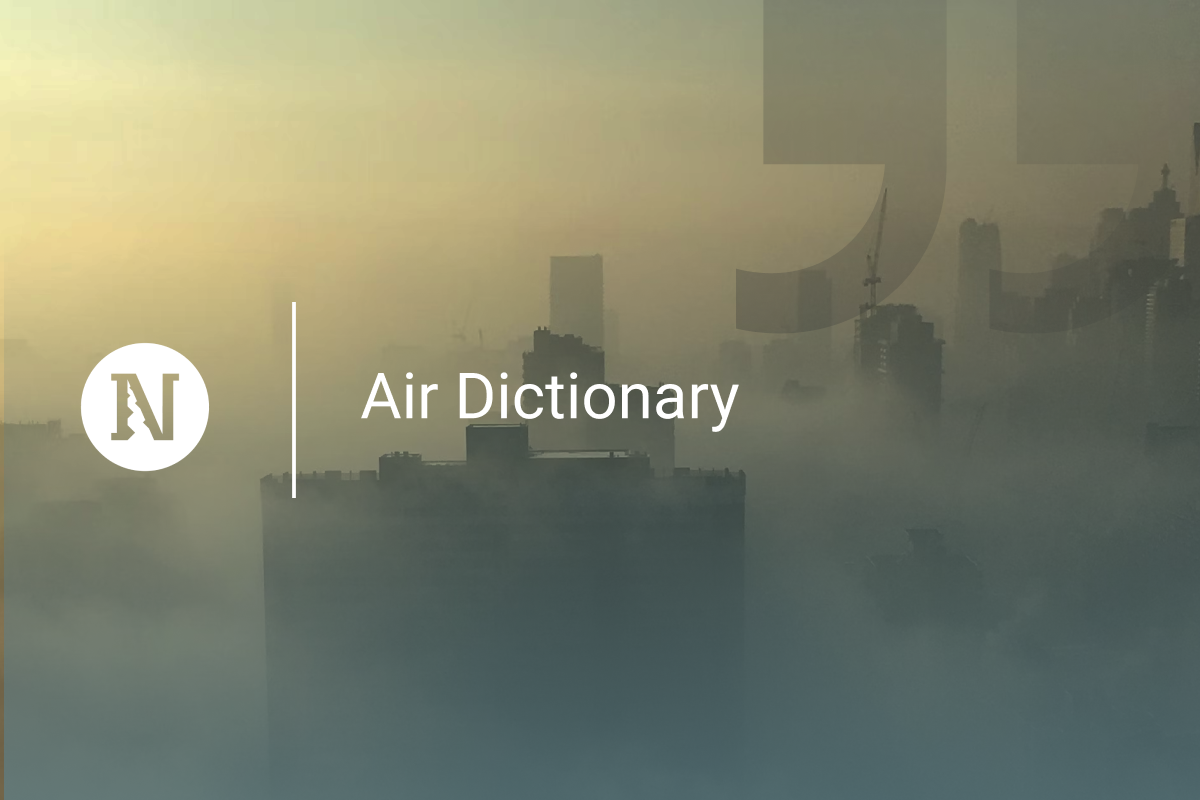Have you ever heard of particulate matter?
Chances are you’ve heard it associated primarily with one specific topic: pollution . But have you ever wondered what it actually is?
WHAT IS PARTICULATE MATTER?
Particulate matter, also known as fine dust or aerosols , is a mixture of small solid particles and liquid droplets suspended in the air. This pollutant is a major contributor to poor air quality in cities and poses a threat to human health and the environment.

WHAT ARE THE SOURCES?
Particulate matter can originate from natural and anthropogenic sources:
- Natural sources : windblown dust, volcanic eruptions, forest fires, and sea salts.
- Anthropogenic sources : industrial activities, vehicular traffic (especially from diesel engines), biomass combustion, energy production and agricultural processes.
The composition is therefore very varied: heavy metals, sulphates, nitrates, ammonium, organic carbon, polycyclic aromatic hydrocarbons, dioxins/furans
WHAT TYPES OF PARTICULATE MATTER EXIST?
Particles are classified primarily by their aerodynamic diameter, that is, their ability to remain suspended in the air. Two main classes of particulate matter can be identified, divided both by size and composition: coarse particulate matter and fine particulate matter .
Fine dust is dust particles with a very small aerodynamic diameter and can be divided into:
PM10 (with diameter ≤ 10 micrometers)
These particles have a maximum diameter of 10 micrometres (μm) and include dust, pollen, spores and particles from road wear and vehicle brakes.
- Health Effects: PM10 is small enough to be inhaled through the upper respiratory tract (nose and throat). In the long term, it can cause irritation to the respiratory system and contribute to diseases such as bronchitis or asthma.
- Sources: combustion of fossil fuels, industrial activities, road traffic and natural processes such as soil erosion.
PM2.5 (with diameter ≤ 2.5 micrometers)
PM2.5 consists of fine particles with a maximum diameter of 2.5 micrometers. These particles can remain suspended in the air for long periods and travel long distances.
- Health effects: Because of their small size, these particles can penetrate deep into the lungs and even enter the bloodstream, contributing to cardiovascular disease, respiratory disease, and increased risk of lung cancer. They are also associated with increased premature mortality.
- Sources: Burning of coal, oil, and gas, vehicular traffic, industrial manufacturing, and chemical reactions between polluting gases in the atmosphere.
PM1 (with diameter ≤ 1 micrometer)
These ultra-fine particles are even smaller and more dangerous. PM1 is a particularly dangerous fraction because it can reach the lung alveoli and, in some cases, cross biological barriers.
- Health Effects: PM1 can cause even more serious damage than larger categories of particulate matter. In addition to negatively affecting the respiratory system, it can enter the bloodstream and affect vital organs such as the heart and brain. Recent studies indicate that these particles may contribute to neurodegenerative diseases.
- Sources: industrial processes, vehicle emissions, biomass combustion, and the use of some household appliances such as wood stoves.

WHAT ARE THE EFFECTS OF PARTICULATE MATTER?
The size of particles influences not only their distribution in the environment, but also their potential impact on our health . As we have just seen, in fact, the largest particles (PM10) tend to settle quickly, while the smaller ones (PM2.5 and PM1) can remain suspended in the air for longer periods and travel over greater distances. Furthermore, the smaller particles penetrate deeper into the respiratory system and can cause systemic damage.
In addition to the effects on human health, particulate matter also has environmental consequences. It can reduce visibility (contributing to haze), damage plants, contaminate water and soil, and contribute to climate change by altering the Earth's energy balance.
MEASURES TO REDUCE EXPOSURE
We have therefore seen that particulate matter is one of the most dangerous pollutants for human health and the environment. Reducing particulate matter emissions , especially the finest ones such as PM2.5 and PM1, is a priority to improve air quality in urban areas and protect public health.
Actions such as adopting cleaner transportation technologies , regulating industrial emissions, and promoting the use of renewable energy can help reduce levels of particulate matter in the atmosphere.
When particulate matter levels are very high in our cities, it is still advisable to protect your airways as much as possible to avoid irritation or even more serious consequences.



Leave a comment
All comments are moderated before being published.
This site is protected by hCaptcha and the hCaptcha Privacy Policy and Terms of Service apply.